Halloween has always been a special day for me. I was probably one of the only children who loved Halloween more than Christmas. What I’ve always liked most about it is the opportunity to dress up as someone or something else. The idea of metamorphosis, transformation, and duality fascinates me. There was another bonus—my birthday is the day after. I remember on my travels trick or treating, I was allowed to stop off at a toy store to pick out my gift. To top it off, a Halloween-themed cake. Most of my happiest memories are associated with Halloween. So, naturally, I wanted to know where it came from.
Summer’s End
Over the years, this is what I gathered about Halloween. During this time of year, the veil between the world of the living and the dead is lifted. The dead visit the living on Halloween. Dressing up in costumes confuses evil spirits. Later on, I heard that Halloween was once an ancient Celtic festival called Samhain.
The current holiday is a mixture of customs from the Celts and Romans. The customs associated with these festivals were kept alive after pagan people converted to Christianity. Samhain became All Hallows Eve, the day before All Saints Day and All Souls’ Day.
David Skal put it best in his book, Death Makes a Holiday: A Cultural History of Halloween: “… contemporary Halloween is a patchwork holiday, a kind of cultural Frankenstein stitched together quite recently from a number of traditions, all fused beneath the cauldron-light of the American melting pot.” [1]
It’s important to note that the ancient Celts themselves didn’t keep a written history. Some writers question the information that has been passed down because the source doesn’t come directly from them. Many details about Celtic society come from the Romans who occupied Celtic Britain from 100 BC to AD 450.
In his book, Halloween: From Pagan Ritual to Party Night, writer Nicholas Rogers writes “Not all writers agree on precisely what went on at the feast of Samhain, but many stress its elemental primitivism and its enduring legacy to the character of Halloween, particularly in terms of its omens, propitiations, and links to the otherworld.” [2]
With that said, here’s what’s been pieced together. Samhain was celebrated in pre-Christian Celtic society. Celtic people lived in areas that would later become northern France, Ireland, England, Scotland, Wales, and Brittany. The spiritual leaders in Celtic society, known as Druids, oversaw the ritual. The word Samhain (pronounced sow-an or sow-in), according to many sources, translates from the ancient Gaelic language to “summer’s end.” According to other accounts, Samhain was also the Celtic lord of the dead.
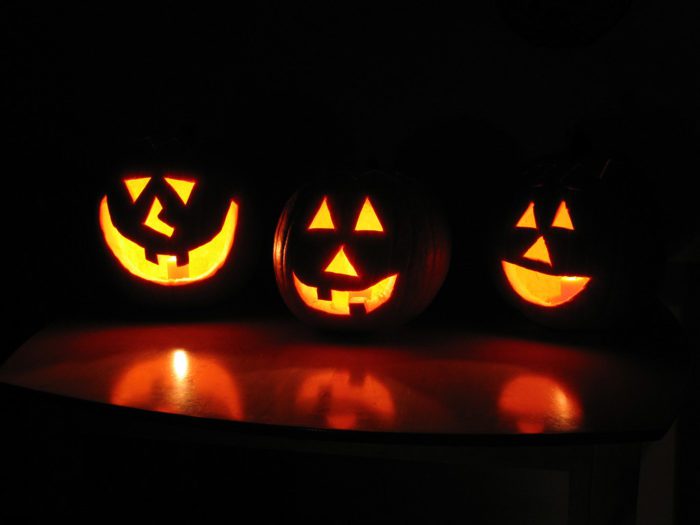
Samhain was one of two major festivals celebrated by the Celts. The other was Beltane, which celebrated the beginning of spring. These celebrations marked two major turning points during the year—the coming of spring in the coming of winter.
Rogers references the tenth-century Gaelic text, Tochmarc Emire “[…] the heroine Emer mentions Samhain as the first of the four quarter days in the medieval Irish calendar, ‘when the summer goes to its rest.’ ” Beltane, Rogers writes, “celebrated the life-generating powers of the sun, Samhain beckoned to winter and the dark nights ahead.” [3]
The time of Samhain was a transitional period from summer to winter. In this time, people lived off the land. The coming of winter would require excessive preparation, including herding animals indoors and harvesting and storing grain. The survival of the community depended upon it. Seeing this as the end of one year and the beginning of the next would make perfect sense in this context. People also looked to the supernatural as a way to explain the natural world.
Complex mythologies were created by ancient people based on the need to understand and control the natural world around them. Divination rituals to predict the health and welfare of the community and witchcraft are two ways of doing this. Seeing this time of the year as a time when the veil is lifted between the unseen and material worlds can be symbolic of the transition of the seasons. In the spring and summer season, the earth is alive, then it “darkens” to winter when the land is dormant. Belief in the afterlife can be seen as life continuing on the non-material plane just as in winter, the earth is dormant.

In the book Halloween: An American Holiday, An American History, Lesley Pratt Bannatyne writes, “Samhain marked the start of the season that rightly belonged to evil spirits—a time when nights were long, and darkness fell early. It was a frightening time for a people who were entirely subject to the forces of nature and who were superstitious about the unknown, with only a primitive sympathetic magic system to rely on for comfort. Samhain was a night of magical glory.” [4]
Since the dead knew about the afterlife and the future, the Druids believed that Samhain was the ideal time for divination. Since it was the end of the year, it was also a time for taking care of official business, such as renewing rents and buying and selling livestock.
According to Bannatyne, the Celts held a vigil for the spirits of the dead. They believed that Samhain, the Lord of the Dead, assembled the spirits for judgment. Those who weren’t good people in life had to spend one year in the afterlife in the form of an animal. Good people received one year in human form. The Celts appealed to Samhain with offerings, hoping that the god would allow their deceased loved ones to visit them on that night. Food and wine were set out for the souls of dead ancestors. [5]
Bannatyne writes that the Celts also believed that evil spirits wandered during Samhain. They wore costumes and had parades to trick evil spirits and lead them out of the village. Sweets were also left out to appease the spirits. [6] Sound familiar?

Just as the dead were being judged in the afterlife, living criminals were judged during the festival of Samhain. Rogers cites Julius Caesar as describing a mass sacrifice of convicted criminals. The men were placed in a gigantic wicker statue and burned alive. [7]
Rogers quotes Caesar’s writings that the Druids believed “that unless for a man’s life a man’s life must be paid, the Majesty of the immortal gods may not be appeased; and in public, as in private, they observe an ordinance of sacrifices of the same kind.” [8]
Bannatyne writes that the Celts had a festival in honor of the sun god, Baal, on November 1 known as Taman. A bonfire was built on the highest hill on October 31 to give energy to the weakening sun. The next day, each member of the village would rekindle their home fire from the bonfire. Since horses were sacred to Baal, they were sacrificed in the bonfires. Druids observed the animal’s movements as they died and the entrails as a means of divining the future. [9]
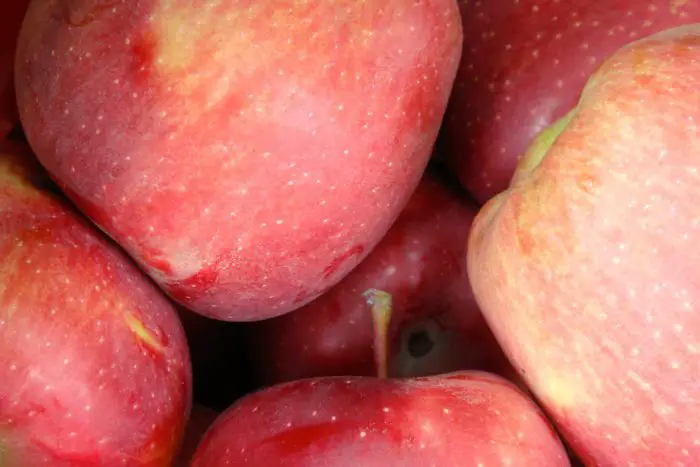
Samhain Meets Pomona
The Romans, who occupied Celtic lands, made their contribution to Halloween. Candy apples fill the shelves at the supermarket during Halloween time alongside bags of candy. Many divination rituals involving apples, including apple bobbing, are still associated with Halloween.
It just so happens that the apple was sacred to the Roman goddess Pomona. Pomona was the goddess of the orchard and the harvest. A festival in her honor was celebrated on November 1. A feast was served, which included not only apples but also a variety of fruits and nuts. The festival was also associated with romance and marriage. [10]
Rogers includes information about some marriage and romance divination that was later practiced in parts of England:
- Observing how nuts popped in a fireplace could predict the fate of a relationship. If the nuts stayed together, the marriage would. If they flew apart, the relationship wouldn’t last.
- In Derbyshire, young women believed they would dream of their future husband if they slept with a sprig of rosemary or cooked sixpence under their pillow.
- In Worcestershire, at midnight, a young woman could throw a ball of new worsted wool through an open window. Whoever picked it up and whispered his name would be her future husband.
- In Cornwall, young women ran molten lead through cold water. The resulting shape predicted the trade or profession of a future husband. [11]
So far, we know that the ancient Celts and the Romans both celebrated harvest festivals in honor of Samhain on October 31 and Pomona on November 1. With the coming of Christianity, the traditions associated with Samhain and Pomona would survive.
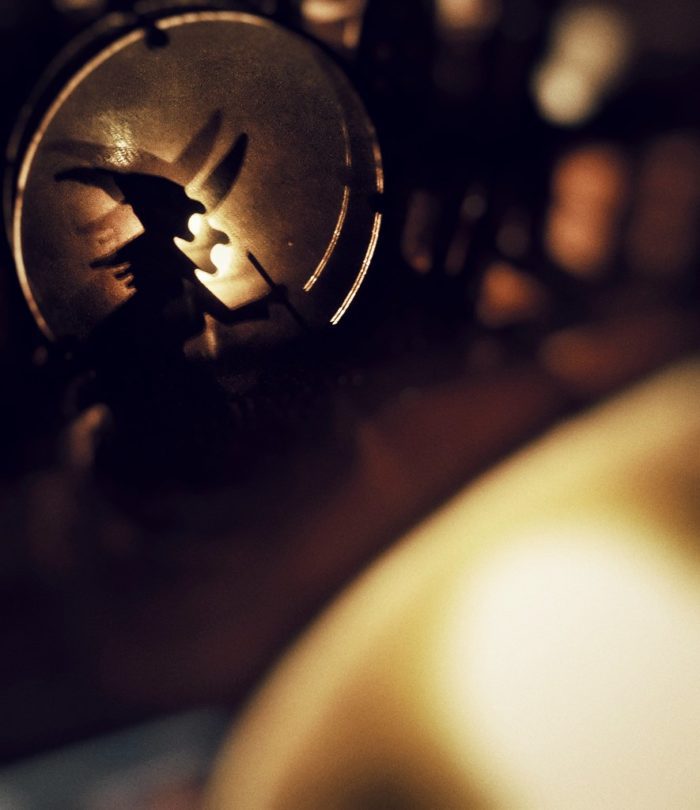
All Saints and All Souls’ Day
The Roman emperor Constantine declared Christianity legal, and the religion began to spread throughout the Roman Empire from the first to fourth centuries AD. Rather than completely obliterate pagan customs, many church leaders thought it would be better to Christianize them.
Rogers writes, “Precisely how Halloween was observed or understood in Britain depended on a variety of factors: the strengths of oral tradition, the structure of the economy, and the religious culture. There is little evidence that the holiday had achieved the uniformity it would in twentieth-century North America.” [12]
However, at summer’s end, the descendants of the ancient Celts managed to keep the fires burning. Parades became processions in cemeteries in remembrance of Christian saints, and, eventually, the dead. Depending on the time period and the political climate, fire was still significant, whether it was a candle lit by Catholics for a soul in purgatory or a bonfire to burn an effigy of the Pope or Guy Fawkes by devout Protestants on the infamous Fifth of November.
Bannatyne cites Pope Gregory I as saying that Christianizing pagan festivals was a way of getting people to accept Christianity as their new religion. He decided to move a feast originally reserved for May 13 by Pope Boniface IV in 610 as a day dedicated to Christian martyrs. Keeping with Pope Gregory I’s idea, Pope Gregory III set this festival during the 8th century for November 1 to honor the saints of St. Peter’s Church. Pope Gregory IV extended the feast to include all saints so that its celebration would reach every citizen under Roman rule. [13]
All Souls’ Day, November 2, originated during the early 9th century. There’s an official story that’s part of church history and also a folktale. In AD 993, the Benedictine abbot Saint Odilo of Cluny asked for the church to set aside a day to remember the departed. His idea was inspired by a directive he’d found in scripture. However, Bannatyne writes that the folk history of All Souls’ Day is different. As the story goes, a pilgrim returning from the Holy Land was shipwrecked on an island and met a hermit who said he heard the groans of tormented dead souls. The pilgrim traveled to Cluny. After he told the abbot Odilo about the hermit, the abbot designated November 2 as a day to pray for the departed souls. [14]
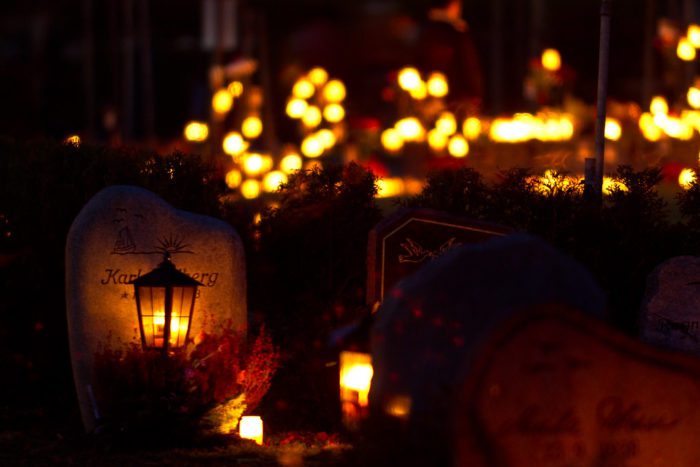
Pope Sylvester II in AD 1000 officially approved All Souls’ Day. The celebration of All Souls’ spread throughout Europe from the 11th to 14th centuries. [15]
Samhain traditions were modified. Needless to say, prayers replaced sacrifices. Instead of food and wine, the church encouraged making soul cakes as offerings to the dead. Soul cakes were given to the town’s poor. In exchange, the poor were expected to offer prayers for the dead. Eventually, this custom evolved to where men and boys went from house to house singing souling songs and asking for ale, food, and money. Villagers were encouraged to masquerade and have processions to honor Christian saints. Bonfires were encouraged as a way to keep the devil away. [16]
By the medieval period in Britain, All Hallow’s Eve or Hallowtide evolved to include some familiar-sounding traditions. A bell ringer walked around a village as a warning about ghosts wandering around that night. People created decorations out of hollowed-out turnips with lit candles inside to ward off evil spirits. They baked soul cakes which were stacked by the door for poor villagers to take in exchange for a prayer for the dead. [17]
The night before All Saint’s Day became Hallowtide or Hallowmas. Hallow simply means to honor as holy—the night before the veneration of saints. We can see the seeds of many contemporary traditions being sown. Besides parades and costumes, souling would become trick or treating, and elaborately carved jack-o’-lanterns would replace hollowed-out turnips.
Religious reformers would try to get rid of All Saint’s and All Souls’ Day. Try as they might, a new festival would be set with traditions oddly similar.
Protestant Reformation
Religious reformers Martin Luther and John Calvin began a movement during the 16th century now known as the Protestant Reformation. Protestants rejected the pope and saints’ feast days and looked only to the Bible for guidance. Without All Hallows Day, there was no All Hallows Eve.
Protestantism spread throughout Europe, which led to violent conflicts with Catholics.
While Protestants rejected All Hallow’s Eve, they did eventually create their own autumn celebration. Guy Fawkes Day, November 5, was a Protestant day of thanksgiving and remembrance of the foiling of the gunpowder plot. On Nov. 5, 1605, a group of Catholics, led by Guy Fawkes, planned to blow up the House of Lords. Protestants set November 5 as a day of remembrance of Protestant triumph over Catholicism.
Scotland, Ireland, Wales, and northern England still celebrated Halloween while predominantly Protestant areas of England observed Guy Fawkes Day. Guy Fawkes Day borrowed Halloween traditions such as bonfires and hollowed-out turnip lanterns. However, people began to carve grotesque faces into the turnips. In some areas of England, Guy Fawkes Day was known as Pope’s Night. Effigies of both the Pope and Guy Fawkes were burned. At certain periods of history, other figures such as Napoleon were burned. [18]
The eve of Guy Fawkes became “mischief night” of pranks. Instead of soul cakes, boys dressed in costumes and begged for coal to burn their effigies of Guy Fawkes. There was a coal-begging song: Soul! Soul! for a lump of coal / A stick and a stake for King George’s sake / Please to give a lump. [19]
Not only did Protestants adopt costumes and harvest bonfires, but they also added mischief night, which always was a big part of the Halloween tradition where I grew up in New Jersey. On October 30, children and teenagers would go out and throw eggs at houses, businesses, and other kids. Shaving cream was also another popular product to attack with, and toilet paper was used to “decorate” an unsuspecting victim’s house.
The American Colonies
Colonists brought their traditions to the new world. Halloween traditions continued, particularly in the southern American colonies and in areas of Canada that were predominantly Irish and Scottish. Colonies established by strict Calvinist Protestants, the Puritans, didn’t observe Halloween traditions at all.
The American South, in particular, was an area where Halloween was kept alive. The reason for this was that the colonists there were predominantly Anglican and Catholic. For example, Bannatyne points out that Virginia, America’s first British colony, was predominantly Anglican. The Anglican Church (Church of England) is a fusion of Protestant and Catholic practices. Henry VIII created the Anglican Church during the 16th century after having a conflict with Rome. Elizabeth I blended both Protestant and Catholic elements in the Anglican Church. The church forbade the veneration of saints’ relics, but the celebration of saints’ days was maintained. The Anglican Church calendar of 1662 lists All Souls’ Day as an unofficial holiday and All Saints Day as a first-class feast day. [20]
The 17th century Salem witch trials were certainly evidence that the colonists believed in witches, who became a prominent Halloween symbol alongside the jack o’ lantern. It wasn’t only the puritanical New England colonies that acknowledged witchcraft. Bannatyne points out that every one of the colonies had legal punishments for those convicted of practicing magic. Witchcraft was the most publicized crime, but the colonists were also tried for other occult practices, such as astrology. Numerous books on the occult were available, and practitioners were consulted. Bannatyne writes that many books on astrology, alchemy, healing, German occultism, and herbalism, are listed as part of many colonists’ libraries. [21]
Like the ancient Celts, Virginian colonists gathered together and held harvest fairs where livestock was sold, games were played, and races were held.
While Anglicans weren’t strongly anti-pope, Guy Fawkes Day was observed as Powder Plot Day and Pope’s Day. [22]
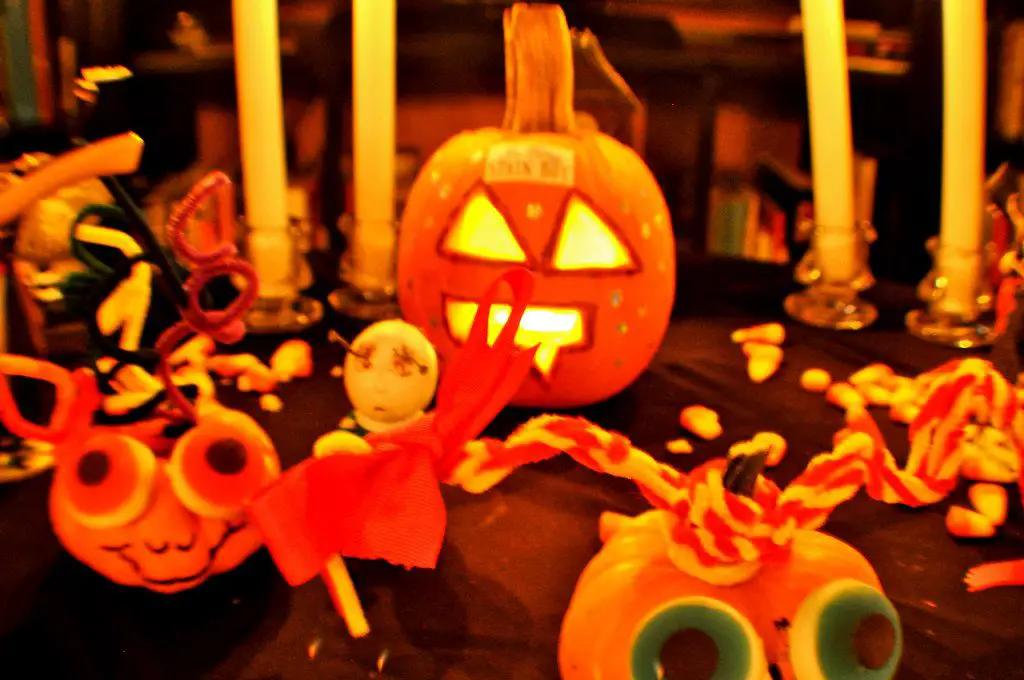
Irish and Scottish Emigration
Bannatyne writes that a culturally diverse colonial New York acknowledged Halloween. New York was first established as New Amsterdam by the Dutch and was a Calvinist colony. The colony passed from the Dutch to the English in 1664 and became ethnically and culturally diverse. Each group brought an aspect of Halloween: the Catholics and Anglicans kept All Saints Day at Hallowmas, and the German Mennonites brought a cultural history that included the occult practices of the German people. The New York Dutch also had an enthusiasm for holidays and embraced New Year’s Eve and May Day. Guy Fawkes Day was also observed in 18th century New York. [23]
More than one source points to the19th century influx of Irish immigrants for spreading the Halloween spirit in North America. Rogers writes that Halloween in Canada began as a Scottish celebration organized by the Caledonian Society of Scottish business elite. During the late 19th century, October 31 was designated as a celebration of Scottish ethnicity with Highland reels, jigs, ballads, and the poems of Robert Burns.
Rogers quotes a guest at the 1885 Montreal meeting who remarked, “…we are not divining the future, or burning Butnuts or catching the ‘snap apple,’ but [we are] celebrating Scottishness.” [24]
However, the celebration would eventually include costumes and treats. Rogers writes that Halloween masks were advertised for sale in local stores in the British Whig Weekly in Kingston Ontario in 1874. An 1897 advertisement reads, “Special for Hallowe’en at Carson’s—Chocolates 10¢ and 15¢ lb.; creams 10¢ and 15¢ lbs, gumdrops 10¢ and 15¢ lb.; all taffies 15¢ per lb. Oysters served in every style. Ice cream on order.” [25]
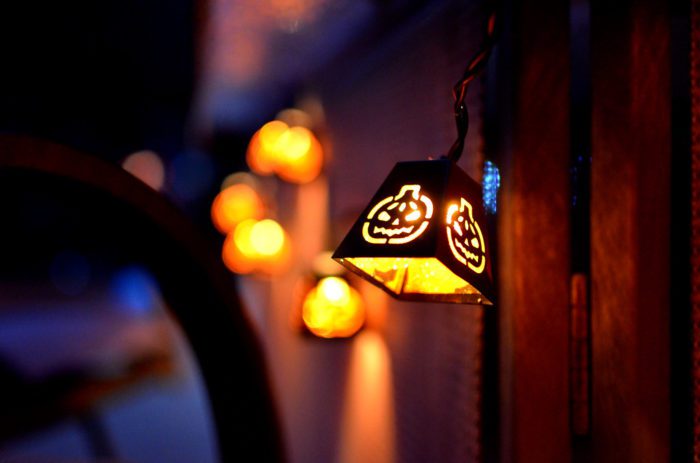
By 1900, the Scottish celebration eventually included the St. George and St. Patrick’s Societies, the St. Jean Baptiste Society, and the Irish Protestant Benevolent Society. The Scottish theme was kept at its core. They used Halloween to rally its supporters and consolidate their membership. [26]
Eventually, these Halloween celebrations branched into New York City when the Irish National League held a Halloween ball at the Lexington Avenue Opera House in 1887. The Gaelic Society on West 28 St. held an evening of poetry and music the same year. [27]
Rogers points out that Philadelphia, which had a large Irish population also, had several Halloween events. During the 1860s, storyteller Barney Williams entertained with stories of old Ireland at Mrs. Drew’s Arch Street Theater. There was also a quadrille party at Mr. Shaw’s academy at Washington Hall. There were revelers in “fancy costume” at the taverns. [28]
Rogers writes, “Because of the peculiarities of newspaper reporting, we know less about the family side of Halloween in the nineteenth century than we do about its more public face at balls and concerts.” [29]
In New York, Rogers writes that the New York Times published accounts of “fireside games” with Scottish and Irish immigrants fortune-telling and dressing up. Rogers quotes the Times: “The forests and dells of the United States are too cold and tramp-infested to be thickly populated with fairies and witches.” [30]
During the late 19th century, many areas throughout the United States had community parties during Halloween, which included dancing, ghost stories, games, and seasonal foods featuring apples and nuts. Turnip lanterns became elaborately carved pumpkins. Halloween became more for children starting in the late 19th and early 20th centuries. According to Bannatyne, communities felt that pranks associated with Halloween were becoming dangerous. Popular pranks such as overturning outhouses evolved to crimes such as stealing and setting fires. Communities decided to take the mischief out of Halloween by encouraging more community-oriented events with more treats and activities for children to keep them from mischief. [31]
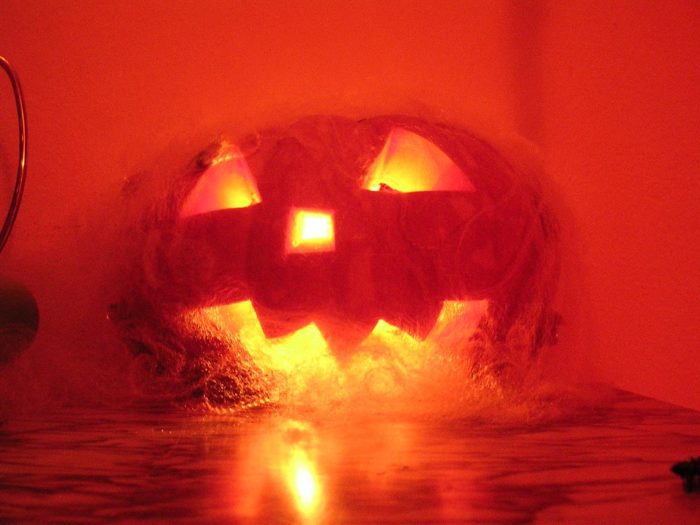
In the mid-1920s, children were encouraged to participate in charitable activities, such as cleaning up backyards and dressing up dolls for children in the hospital. In exchange, these children would be treated to parties with games and treats. Chicago in 1925 and Oberlin, Kansas in 1927 were the first two American cities to put this into practice. They found that there was a decrease in the amount of mischief. Eventually, trick or treating, which was related to souling, rose in popularity during the 1950s. [32]
It seems like Halloween has become steadily more popular since my childhood. It’s still a time of year that I look forward to.
Instead of one day, there are now month-long film fests on TV featuring classic horror films. I remember the small sections of pharmacies and toy stores that featured Halloween costumes and decorations. Now, there are entire stores like Spirit Halloween dedicated to the holiday and more elaborate decorations that rival Christmas. There are just as many costumes for adults as for children.
My theory is that all things dark and spooky became popular starting with my generation. The 1970s and ’80s saw the start of the slasher film genre. There was more availability of horror movies, also, once VCRs were in every home. Everything now seems a bit darker or has a more spooky touch, from superheroes to Christmas-themed horror. People are more informed and our minds less innocent than our parents. Perhaps this makes us more willing to embrace our darker halves.
Works Cited
1] Skal, David J. Death Makes a Holiday: A Cultural History of Halloween. New York: Bloomsbury, 2002, p. 20
[2] Rogers, Nicholas. Halloween: From Pagan Ritual to Party Night. New York: Oxford University Press, 2002, p. 12
[3] Rogers p. 11
[4] Bannatyne, Lesley Pratt. Halloween: An American Holiday, An American History. New York: Facts on File, 1990, p. 4
[5] Bannatyne, p. 4
[6] Bannatyne, p. 5
[7] Rogers p. 15
[8] Rogers, p. 15
[9] Bannatyne, p. 6
[10] Bannatyne, p. 6
[11] Rogers, p. 32
[12] Rogers, p. 47
[13] Bannatyne, p. 9
[14] Bannatyne, p.12
[15] Bannatyne, p. 12
[16] Bannatyne p. 11
[17] Bannatyne, p. 12
[18] Bannatyne, p. 15-16
[19] Bannatyne, p.15
[20] Bannatyne p. 22- 23
[21] Bannatyne, p. 23
[22] Bannatyne, p. 24
[23] Bannatyne, p. 39-40)
[24] Rogers p 51
[25] Rogers p. 53
[26] Rogers, p. 51
[27] Rogers, p. 51
[28] Rogers, p. 52
[29] Rogers p. 52
[30] Rogers, p. 5
[31] Bannatyne, p. 125-126
[32] Bannatyne, p. 125-126
Looking for more on the origins of Halloween? We’ve got you:
“How Did Halloween Come to Be? The Why, When and Where of the Scary Season”



